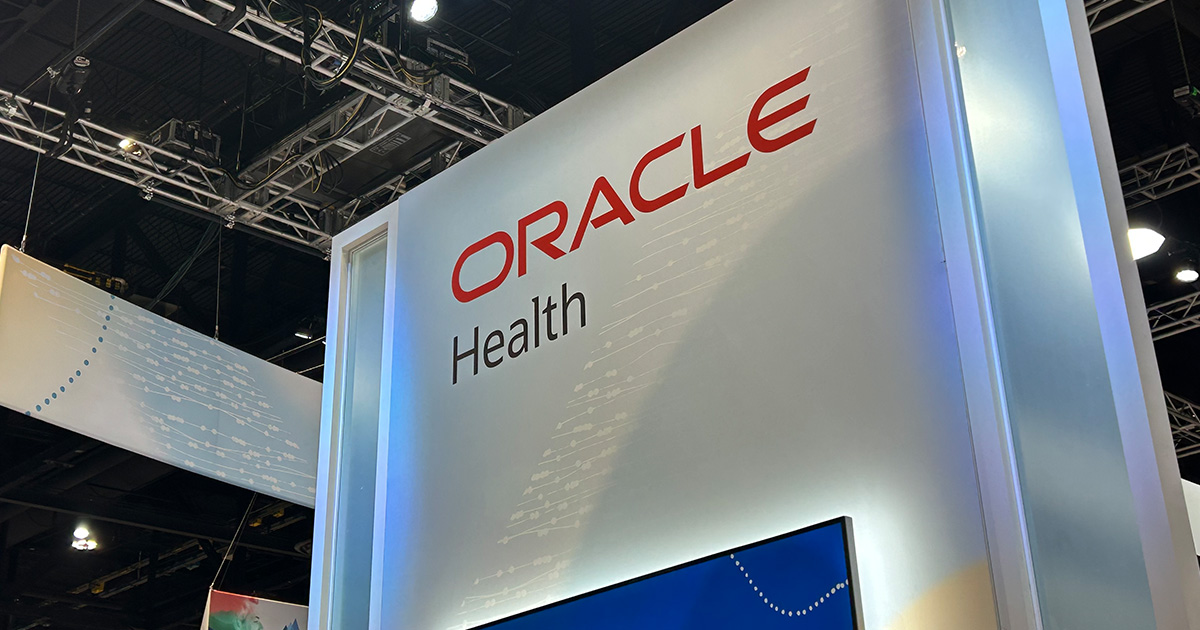
Kate Ulrich, SVP of perioperative services at Tampa General Hospital
Photo: Kate Ulrich
Tampa General Hospital's surgical teams lacked up-to-date, complete data about what was actually happening inside their operating rooms.
THE CHALLENGE
Without this timely information, staff needed to make critical scheduling and efficiency decisions with little concrete data to guide them. These data challenges created a ripple effect, and surgeries were often delayed, as well. As all operating room staff know, when one surgery runs over schedule, it impacts the entire day.
The Florida hospital also struggled with extended turnover times, which measure the period between one patient exiting the OR (otherwise known as "wheels-out") and the next patient entering (or "wheels-in"). During this break, the team must properly disinfect and rearrange the room and set the specific equipment and supplies to prepare for the next case.
It's important this period be long enough to do this critical work, but also not so long as to waste time and delay wheels-in.
"Addressing the main causes of our delays and long turnover times was the real challenge, since our teams had limited insight into what exactly was the main source of the bottlenecks," said Kate Ulrich, senior vice president of perioperative services at Tampa General Hospital.
PROPOSAL
The hospital turned to Apella, vendor of an AI-powered OR optimization platform that Tampa General hoped would provide its surgical teams with complete visibility into every operating room.
"What's more, we'd have visibility on everything else – from our early-morning planning to post-case analysis," Ulrich said. "The technology's comprehensive view would allow our staff to see exactly what was happening in real time, respond quickly to immediate issues and better plan for future operations.
"The platform uses ambient AI and computer vision integrated with our EHR data to automate coordination, scheduling and staffing processes," she explained. "The technology automatically captures and categorizes all the key events in the operating room throughout the day and forecasts how the case schedule and workflows will change with enough advance notice for surgical teams to make critical decisions before any change can derail the day, freeing charge and circulating nurses to work at the top of their license in support of surgical success."
And, because the platform captures more surgical case events with greater accuracy than manual record-keeping can, she added, the entire perioperative team is able to focus on patient care and clinical coordination, not documentation. This gives teams additional capacity to provide better, safer care to more patients while still going home on time, she said.
MEETING THE CHALLENGE
Tampa General implemented the technology in August 2024, working directly with the Apella team to separate measurable phases for the first time. Hospital staff were able to then confirm suspected scheduling problems, implement targeted solutions and track progress with precision.
"Our teams now use the technology's event detection tools, historical insights and real-time monitoring to pinpoint the actual sources of delays," Ulrich explained. "We've positioned the technology's live video feeds at nursing stations, enabling staff to proactively intervene and dispatch additional staff when needed. This real-time monitoring has fundamentally transformed how our staff make decisions throughout each day, moving from reactive problem solving to proactive optimization.
"The technology also has significantly improved workflow efficiency for surgical teams," she continued. "Surgeons now receive automated SMS updates from the platform when operating rooms are ready for them, which has substantially improved their ability to maximize their time and maintain optimal schedules throughout busy surgical days. Not to mention, the clinicians love getting texts that keep them from unnecessary layovers or making guesses."
RESULTS
In just the first 10 months of pilot implementation, Tampa General estimated the team reduced interruptions by about 1.4 door opens per case, adding up to about 40,000 minutes of productivity saved for clinicians, nurses, administrators and support staff.
The real-time visibility from the vendor's ambient sensor technology directly contributed to this productivity, Ulrich noted. By significantly reducing the manual room checks, phone calls and disruptions typical of the charge nurse's perioperative workflow, staff created a more connected and informed OR environment.
"Although we are not yet able to quantify the impact of Apella's technology at Tampa General, the relationship between operating room traffic and surgical site infections is well established in the literature," she said. "Multiple studies demonstrate that increased door openings during surgery disrupt laminar airflow, increase airborne particle counts and correlate with higher SSI risk.
"Therefore, perioperative teams widely recognize that reducing unnecessary door openings directly contributes to safer surgical environments and fewer SSIs," she added.
The new integration also recovered more than 3,000 minutes each week previously lost to surgical inefficiencies.
"By replacing assumptions with the platform's data, which analyzes operations in measurable segments, we've optimized our scheduling processes and reduced turnover inefficiencies," Ulrich reported. "The most significant result of that extra time has been flexibility for add-on cases.
"Clinicians and perioperative staff have been able to easily see available time that has opened up in the schedule due to improved productivity in order to include more cases to treat more patients, without needing additional resources or pushing into overtime," she continued.
In the cardiovascular transplant ORs that handle more complex cases, staff were also able to use the technology to isolate where turnover bottlenecks occurred.
"With this new insight, we reduced average cleaning time by 12% and cut overall average turnover time by five minutes," she said. "Those five minutes add up to capacity for roughly 38 more surgical cases per year, all without adding rooms or staff. Each additional case enabled by Apella's real-time data helps us use our existing OR resources more efficiently and increase surgical capacity."
ADVICE FOR OTHERS
Prioritize technology that delivers concrete, measurable benefits to clinical staff from day one, Ulrich advised her peers looking at similar systems.
"The right tools should allow teams to focus on their core strength – providing safe quality care – rather than spending valuable time on manual documentation or outdated scheduling processes," she explained. "Data must be precise, supplemental, and, above all, actionable.
"Equally important, it should be collected in an unbiased, automated way that does not depend on human input, which can vary from person to person and is often incomplete or inconsistent when staff are under pressure," she continued. "By relying on objective, technology-driven data capture, organizations can ensure they are working with accurate, standardized insights that reflect what is truly happening in the operating room."
Healthcare organizations also should seek systems that integrate seamlessly into existing workflows, avoiding the need for disruptive operational overhauls, she concluded.
Follow Bill's health IT coverage on LinkedIn: Bill Siwicki
Email him: bsiwicki@himss.org
Healthcare IT News is a HIMSS Media publication.
WATCH NOW: EHR transitions: How to ensure adoption and satisfaction


